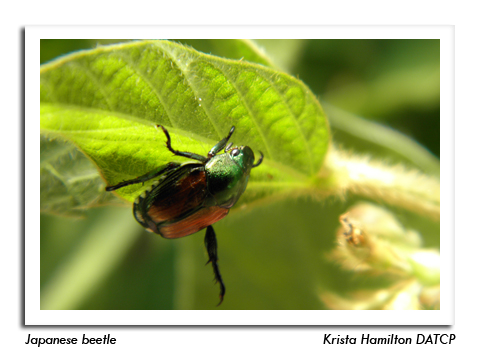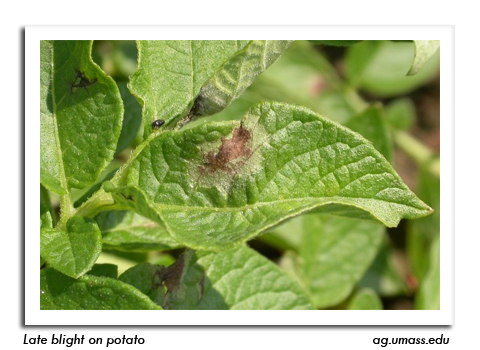
 |
|
|
Looking Ahead
Volume 65 Number 10 Date 07/08/2020 JAPANESE BEETLE - Populations have increased markedly with the recent heat. Damage to fruit trees, ornamentals and field crops will continue to intensify this month and management may be warranted. If scouting indicates the need for control, targeted spot treatment of individual trees or problem areas is usually an effective alternative to broadcast applications, which harm non-target and beneficial insects. BROWN MARMORATED STINK BUG - Nymphs produced by overwintered adults are appearing in the Madison and La Crosse areas. A milder-than average 2019-20 winter favored survival of this invasive pest, and growers in southern and eastern Wisconsin where BMSB has been established for 10 years or longer could see stink bug damage in field, fruit, and vegetable crops for the first time this summer. APPLE MAGGOT - Adult flies have been captured on orchard traps in the past two weeks (June 25-July 8). Apple growers concerned about this pest can set a minimum of three traps per 10 acres in early-ripening cultivars, and one trap every 200-300 feet in perimeter trees adjacent to wild hosts. The traps should be placed at eye-level, clearly visible on the outside edge of the canopy. Home gardeners may also use the visual traps to monitor apple maggot populations. EUROPEAN CORN BORER - Surveys indicate that larvae from the spring flight are presently in the third to fifth instars. The treatment window for first-generation larvae has closed across the southern two-thirds of the state. Chemical control remains an option for a few more days in areas north of Stevens Point. LATE BLIGHT - Potato and tomato growers are advised to increase monitoring for signs of late blight infection. Disease severity value (DSV) accumulations in potato fields near Grand Marsh, Hancock, Plover and Antigo have exceeded the late blight risk threshold triggering preventative fungicide application. UW Vegetable Plant Pathologist Dr. Amanda Gevens recommends that routine weekly treatments begin at this time. As of July 9, no cases of late blight have been detected in the state. EURASIAN HEMP BORER - The second flight is beginning in far southern Wisconsin. Moths of this flight will produce larvae capable of causing additional damage to greenhouse and field hemp plants. Some industrial hemp growers are already reporting stem boring injury to their crops resulting from the first generation. Any treatments targeting the current generation of larvae must be applied during the narrow window between egg hatch and before the caterpillars bore into hemp stems and developing flowers. SPOTTED WING DROSOPHILA - Egg laying has intensified in response to the hot weather of early July. Small white SWD larvae are reportedly becoming noticeable in fruits. Berry growers are advised to increase sampling for larvae to help determine fruit marketability and whether management actions are effective. Larval sampling methods are provided in the FRUIT section. WESTERN BEAN CUTWORM - The annual moth flight has started, with 25% emergence forecast for next week throughout most of southern Wisconsin. Scouting corn plants for egg masses and small larvae should begin as fields enter the late-whorl and pre-tassel stages. If control is warranted, the optimal timing for insecticide treatment is at 90-95% tassel emergence. -- Krista Hamilton, DATCP Entomologist 
.jpg)
.jpg)

.jpg)

|
|
|